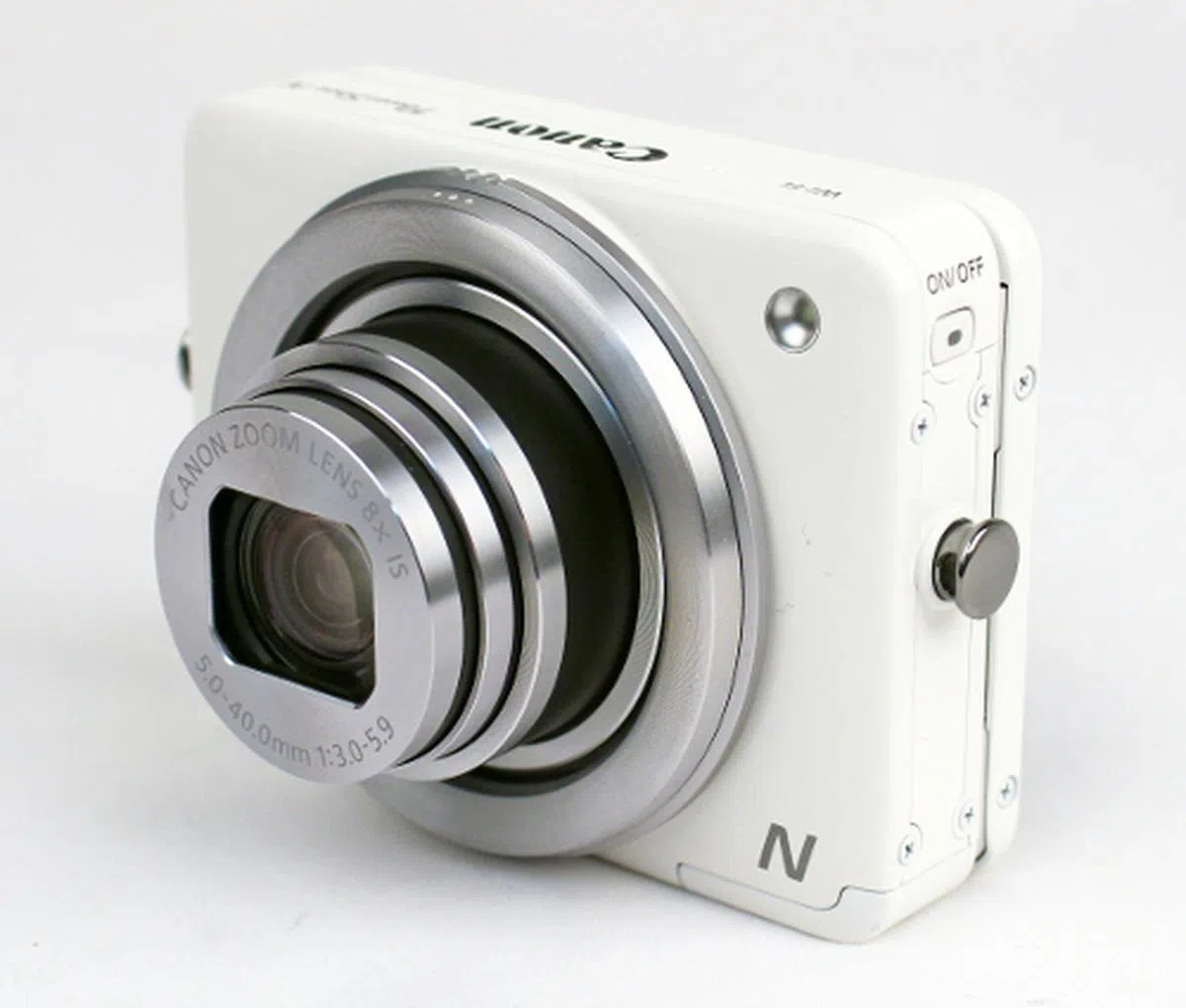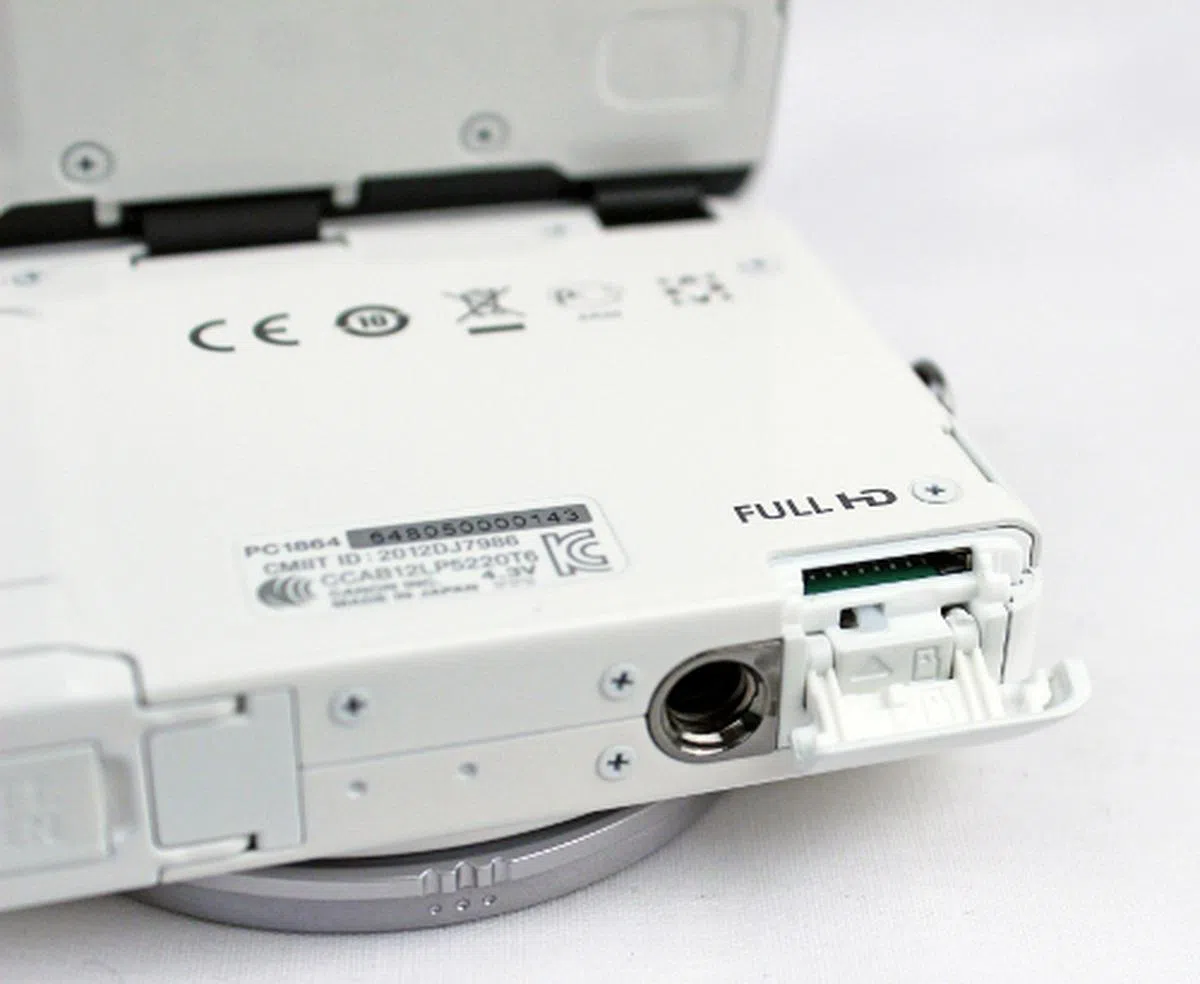Canon PowerShot N - A New Direction
With smartphones invading the digital compact camera's turf with ever better sensors and software features, it's time for compacts to evolve. Thinking out of the box is Canon's PowerShot N that features a unique design. Did it spawn a new niche segment or is the PowerShot N a step in the wrong direction? We find out in our review.
By HardwareZone Team -
Introduction
With smartphones invading the digital compact camera space, it’s an especially tough fight for the compact camera segment. With many manufacturers pushing for advanced compacts that features manual controls and better image quality, Canon has also opted to explore other avenues with the PowerShot N.
First introduced in January at CES 2013 and then demoed locally in April for media like HardwareZone, the PowerShot N features a unique design that encourages shooting from the hip (you can literally do this) or from practically any other angle such as diagonally, horizontally and even high or low angles. Additionally, it aims to make sharing your images online a much easier process by pairing with a mobile device. So has Canon spawned a new compact camera niche or is the PowerShot N a step in the wrong direction? Let's take a quick look at its specs before we relate our experience:-
Design and Handling
Whatever design preconceptions you have of a standard point-and-shoot will be shaken with the PowerShot N. It sports a square shape so both right and left-handed users will have no issues with handling the camera. The camera is compact enough to slip into your back pocket, though the touch-sensitive tilting display does add some thickness to the PowerShot N. Take note that the PowerShot N only accepts microSD cards due to its small size, so if you have an existing collection of SD cards, they can’t be used with this camera. Fortunately, microSD is also often used with smartphones, so most people wouldn't really mind this storage media.
 |  |
Speaking of the display, the PowerShot N’s 2.8-inch display is able to tilt up 90 degrees so as to allow you to shoot from the hip or at waist-level. You can even flip the camera upside down so that the display faces you when you snap overhead shots. The PowerShot N will cleverly adjust the orientation of the screen and the shot captured so there’s no need to tilt your head. Unfortunately the display does not swing out sideways so this does limit its overall usability/versatility that Canon likes to tout.
With its compact shape, there’s no buttons on the top panel of the camera. Instead, power button is located on the left profile while the playback and a Mobile Device Connect buttons are on the right profile of the camera. Above these two buttons is a switch that allows users to toggle between the normal shooting mode and the Creative Shot mode (more about this later).
You can share your photographs quickly with the Mobile Device Connect button that allows users to pair their smartphone or tablet with the camera via Canon’s CameraWindow app. While the process is quick and straightforward, it does require users to understand how the pairing process works and how to go about it.

While the PowerShot N's display is able to tilt up 90 degrees, a pity it doesn't swing out sideways. On this side of the camera (right side) are the Creative Shot mode switch, Mobile Device Connect and Playback buttons.
So how do you shoot with the PowerShot N seeing that there’s no shutter button? The PowerShot N comes with two rings surrounding the lens barrel - the larger one is the zoom ring while the smaller ring is the shooting ring. The traditional shutter button has been scrapped in favor of a shooting ring on the PowerShot N, but does this make shooting easier? In our practical use, we found this approach works fine most of the time as the shutter ring is always within reach and allows you to take shots from various angles easily - even single-handed. However, the shutter ring is quite sensitive, so there were quite a few situations where we wanted to focus by half-pressing the ring, but ended up snapping a blurry shot by pressing the ring down entirely.
Alternatively, users can focus and fire a shot by using the touch-sensitive display, similar to a smartphone. We suspect many users will opt for this method, even though it will require a two-handed operation. By contrast, the shutter ring option can be operated in one-hand, depending on the angle used to holster the camera.
Another point to note is that the shooting ring can only be pushed down or up while shooting in landscape mode. This means that you will have to push the ring to the left or right when shooting in portrait mode.
Generally, shooting is a pretty simple affair with the PowerShot N as there are no manual shooting modes and only just a handful of other options. There’s the Creative Shot, Smart Auto, Hybrid Auto, Program and seven filters to shoot with. The mode that will probably interest users the most (and most likely, used the most) is the Creative Shot mode. This unique mode takes six different versions of the scene when you snap a shot. One image will be the original while the other five will feature different compositions, color, and many other variables which are randomly adjusted (mainly from its repository of 25 filters). What you get pretty much depends on luck and it’s an interesting and fun mode to shoot with. It's an apt function for a fun looking camera. For an example of what you can expect, hit the next page where we've sample photographs taken with the camera.

The larger ring with the three notches is the zoom ring, while the smaller one with the three indents is the shutter ring.

The PowerShot N's display is touch-enabled so you can tap to focus or even tap to snap a picture.
Image Quality and Performance
Users may expect Canon to cut corners with the PowerShot N due to the fact that it’s meant to be an approachable and fuss-free way to shoot. Fortunately, you'll be relieved to know that the PowerShot N definitely shoots better images than a smartphone. With its 12.1MP CMOS sensor, colors turned out saturated and the camera scored 2000LPH (horizontal) by 1800LPH (vertical), which is similar to the better-performing compact cameras in the market. But since there's no manual shooting modes, there's no way for users to adjust the aperture and shutter speed, making the PowerShot N a basic camera in terms of shooting modes.
The PowerShot N is able to control noise with the aid of its noise reduction software. Thus while you will see a bit of noise creeping in at ISO200, it’s quite well-controlled and fortunately the camera’s noise reduction doesn’t get too aggressive. The PowerShot N’s battery life is rated for 200 shots, though we feel that’s an optimal estimate as the number of shots you get from the camera would be lower if you’re going to transfer images to your smartphone wirelessly.
Below are sample photographs shot with the Canon PowerShot N. The photos have not been post-processed and are copyright to SPH Magazines. They are provided for your reference only and we ask that you do not reproduce them elsewhere. Click for the full-resolution images

f/3.2 at 35mm, 1/80 sec, ISO160

f/3 at 28mm, 1/80 sec, ISO640

A 100% crop reveals that at ISO800, the PowerShot N may not have the best in terms of detail retention, but it's definitely not the worst we've seen for a compact.

This image may seem pretty boring, but shooting with the Creative Shot mode may turn up some surprises as shown below.

Some of the shots from the Creative Shot mode might be a hit or miss affair, but it's a fun way to produce random results without trying to put thought into which creative filter or mode to try.

f/3.2 at 35mm, 1/80 sec, ISO160

f/3 at 35mm, 1/15 sec, ISO1600
Conclusion
With many opting to shoot with their smartphones, it’s inevitable that the merits of purchasing a digital compact are hotly debated - especially those who've invested in premium smartphones. Certainly digital compact cameras are facing a huge challenge and while we feel that the PowerShot N is a step in the right direction to revive this camera segment, Canon’s concept still needs polishing.
Image quality and noise control definitely trumps a smartphone, and it is light and convenient to boot. However that's where the positives end. Potential buyers of the PowerShot N are either looking to shoot with it as their main shooting device or as a companion to their smartphone. Unfortunately, the PowerShot N didn't quite turn out to be a very compelling option in either scenario.
Those who are used to handling a traditional compact will find the PowerShot N awkward due to its square shape and the use of the unconventional shooting ring. Then there's the comparison against smartphones where the camera still falls short in other areas besides its good imaging quality. For example, Instagram offers more filters, Wi-Fi implementation still needs more polish and taking self-portraits is close to impossible due to the difficulty in pressing the shutter ring from that angle and how the display only tilts 90 degrees upwards. If you could look past some of these drawbacks to try something new and unique, we might have recommended it, but with the PowerShot N’s high asking price of S$399, it's difficult to justify given some of its limitations.
If you're looking for an interesting imaging related product for gifting, the Canon PowerShot N might be an interesting option, but we also reckon the cheaper name card sized Nikon Coolpix S01 to be an equally suitable candidate too.

The Canon PowerShot N got off to a promising start, but it was ultimately let down by its own uniqueness in handling and price point. On a brighter note, imaging quality is good for its class of cameras.
Our articles may contain affiliate links. If you buy through these links, we may earn a small commission.